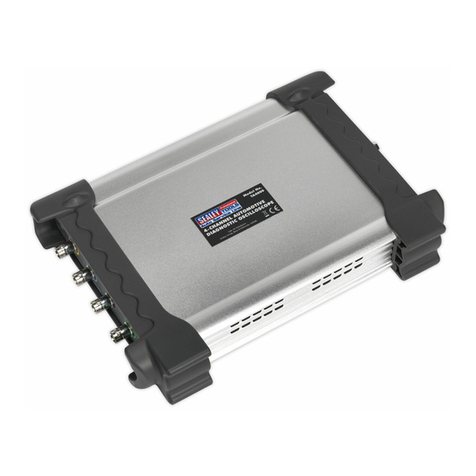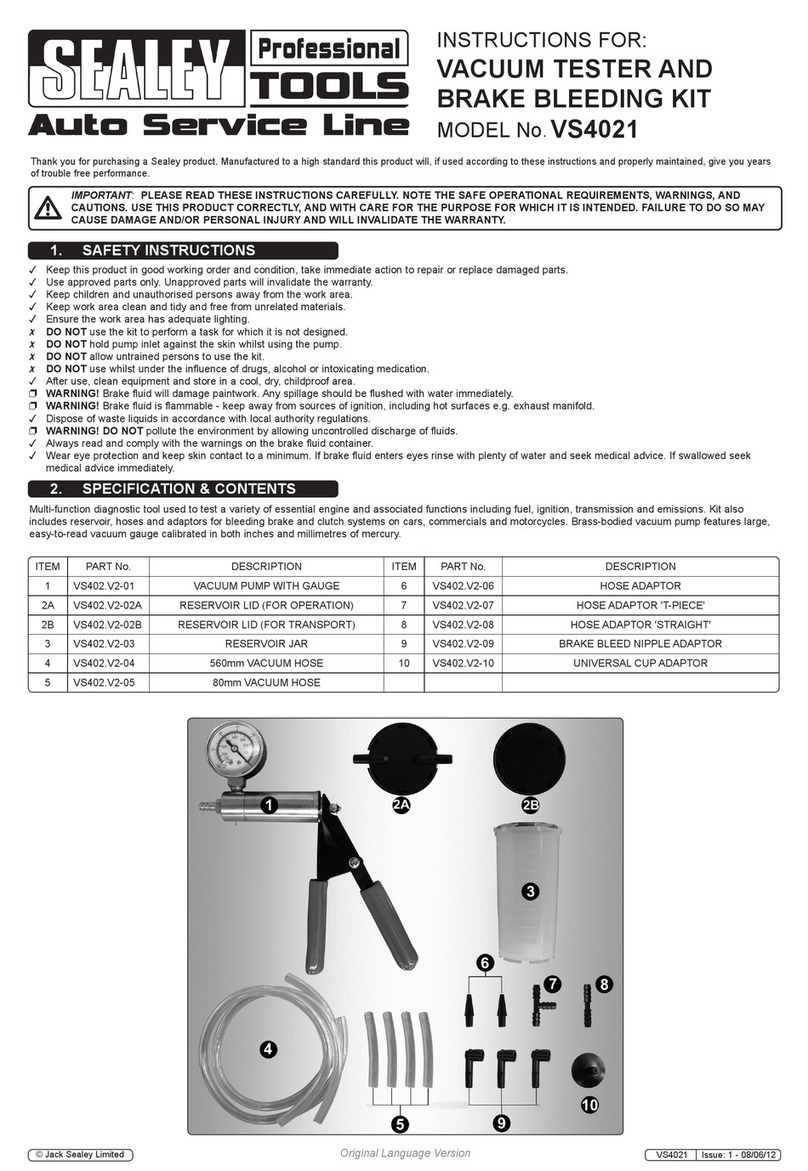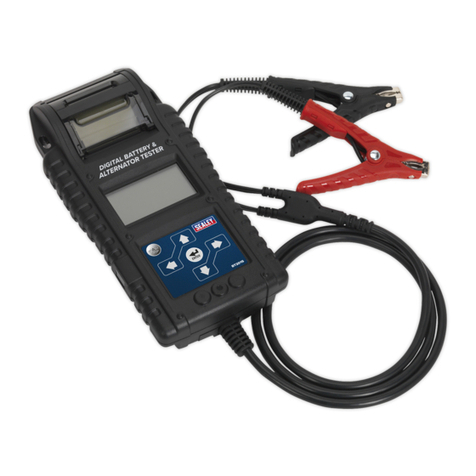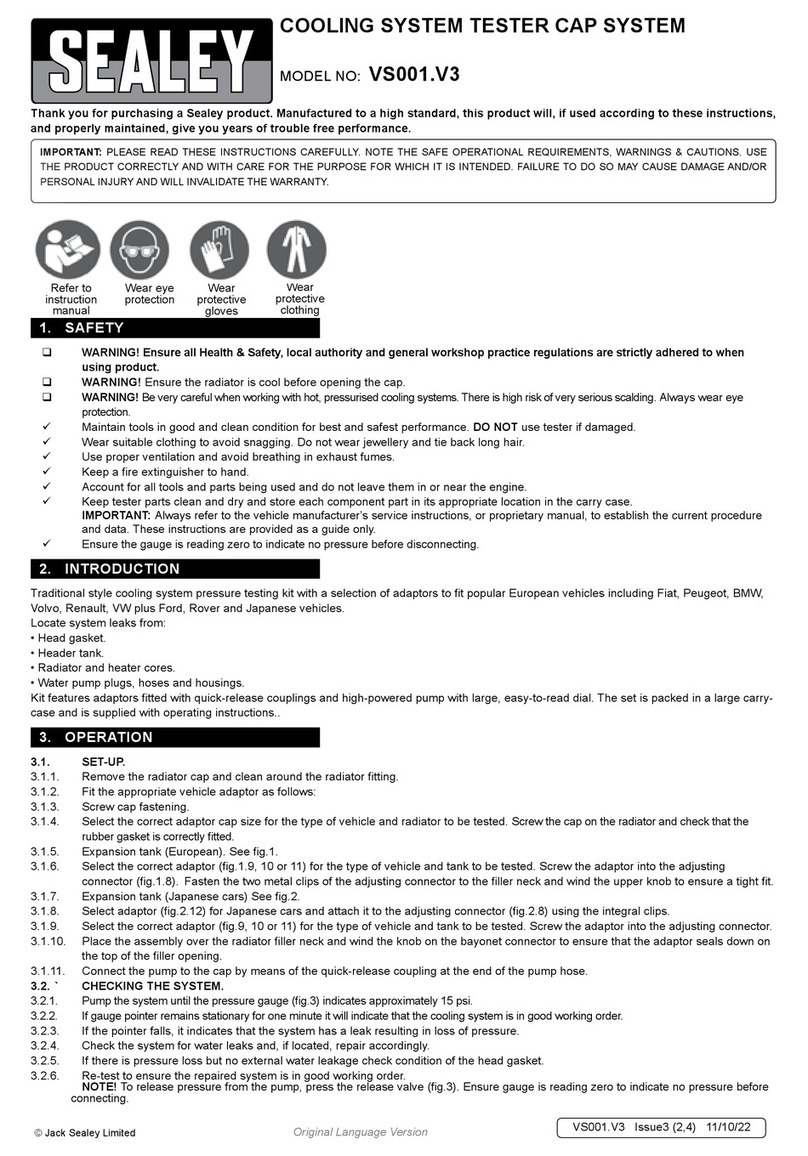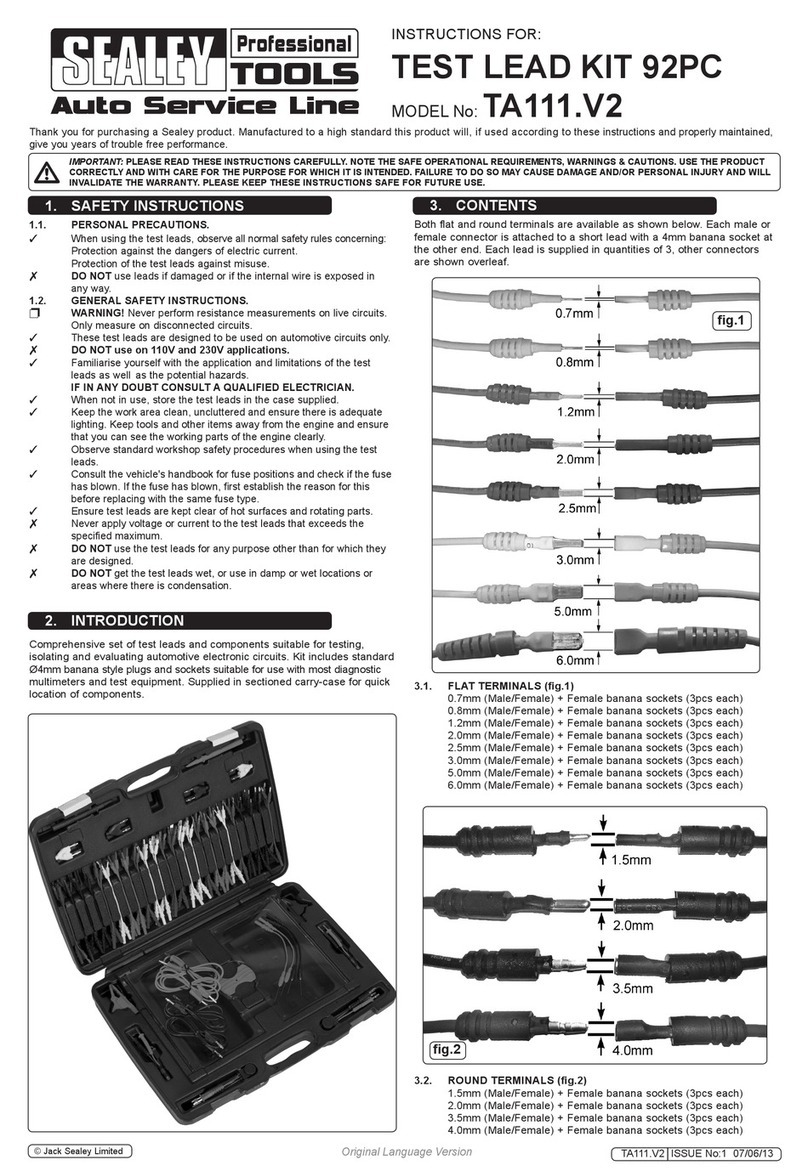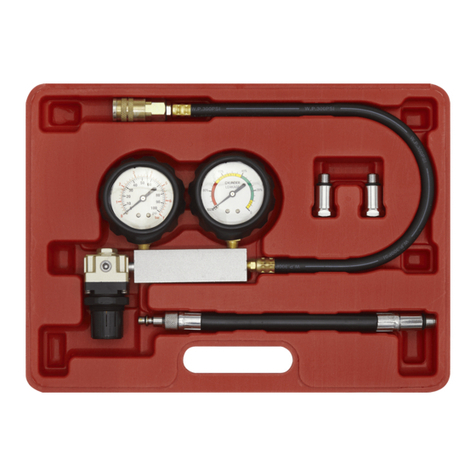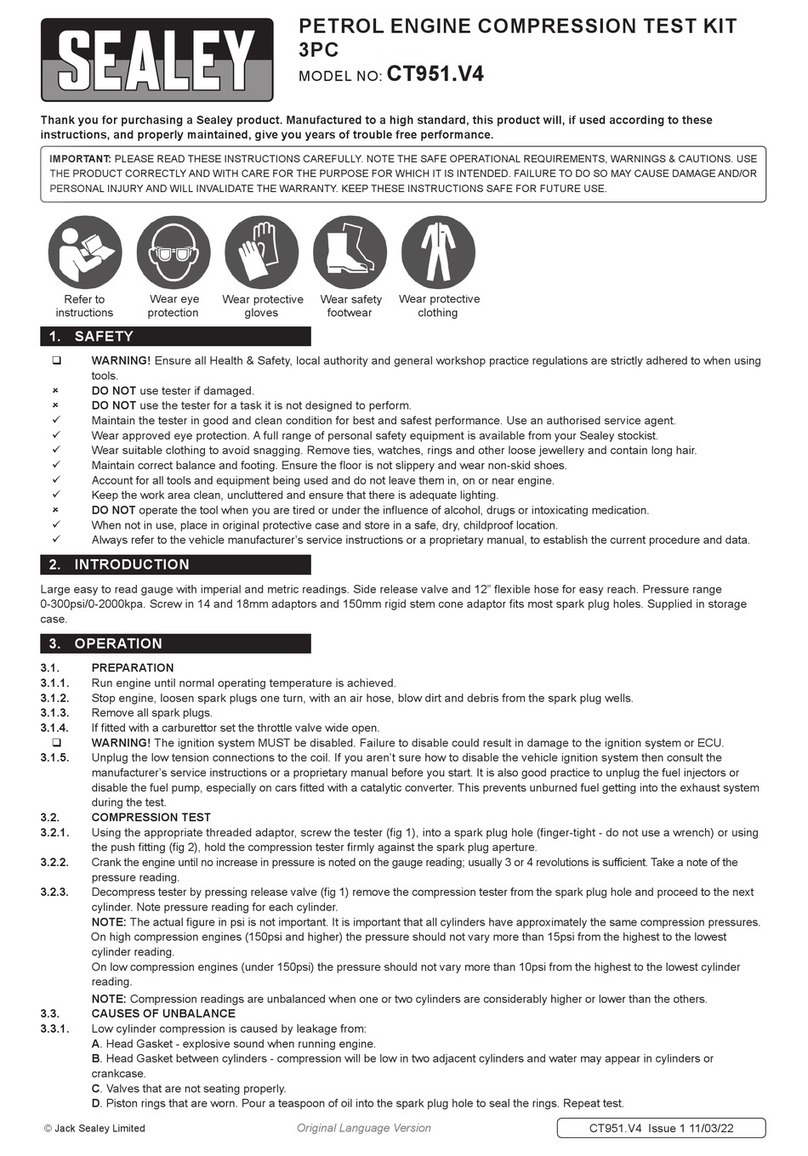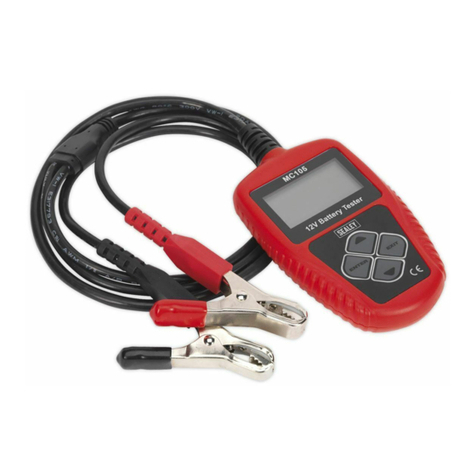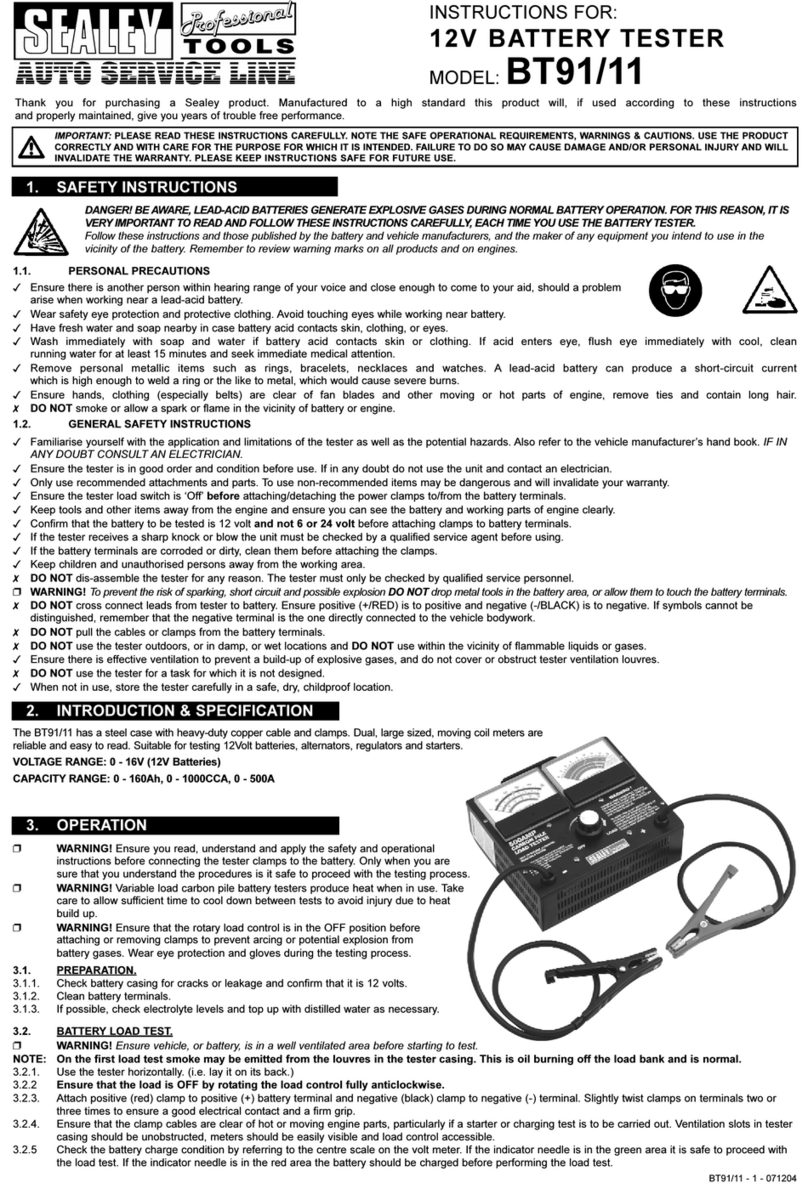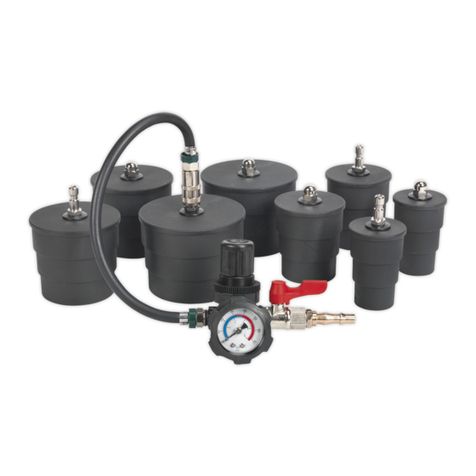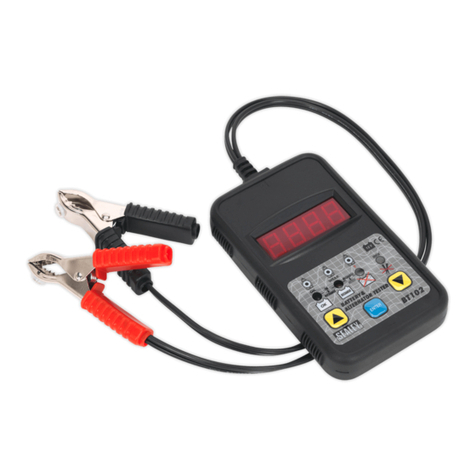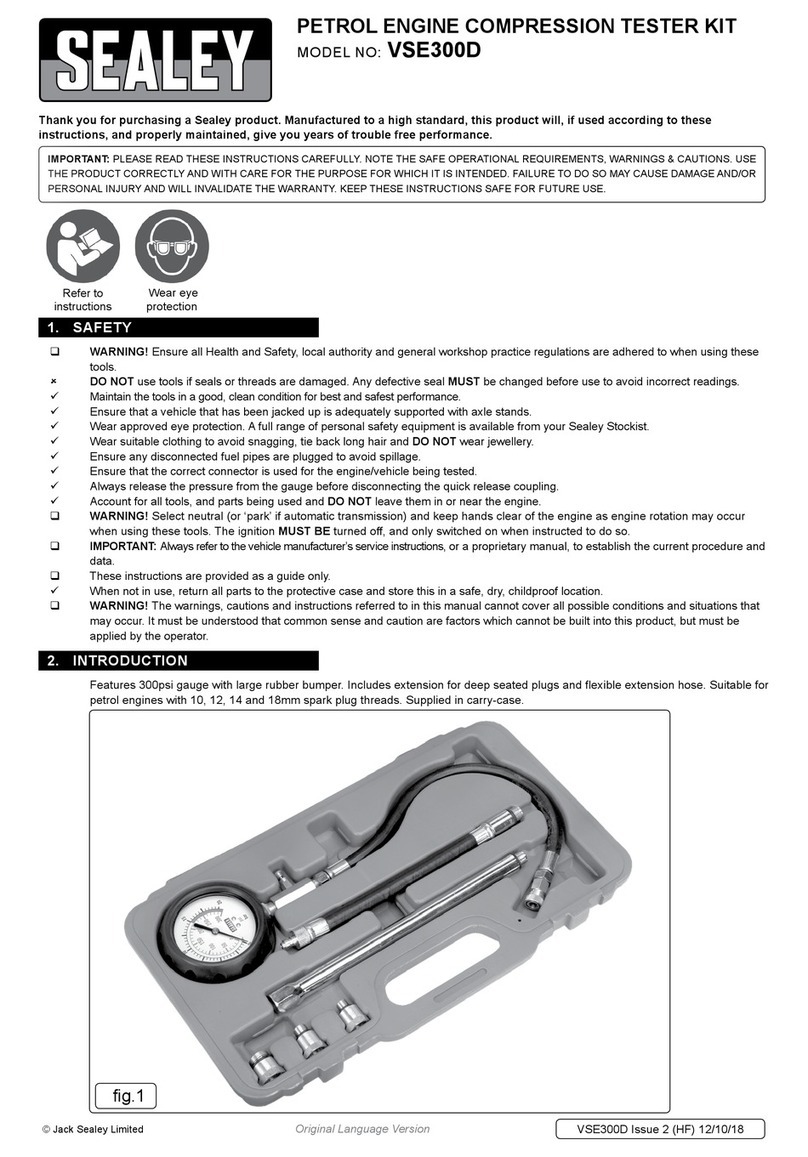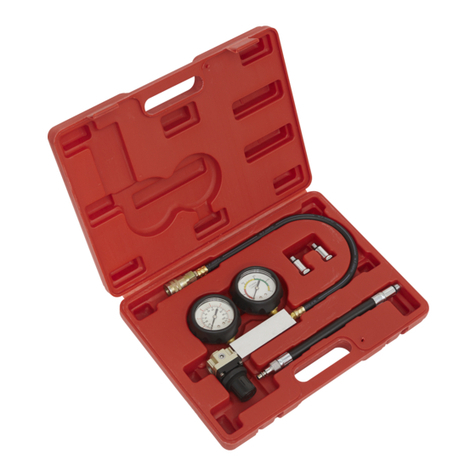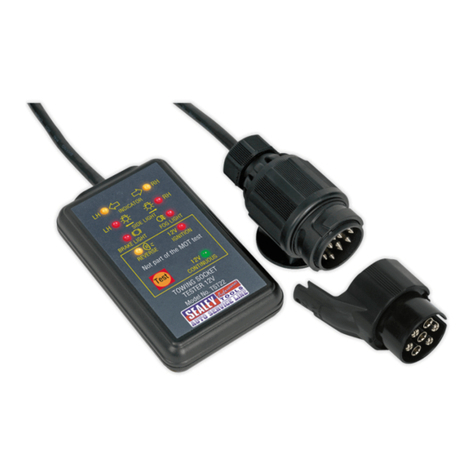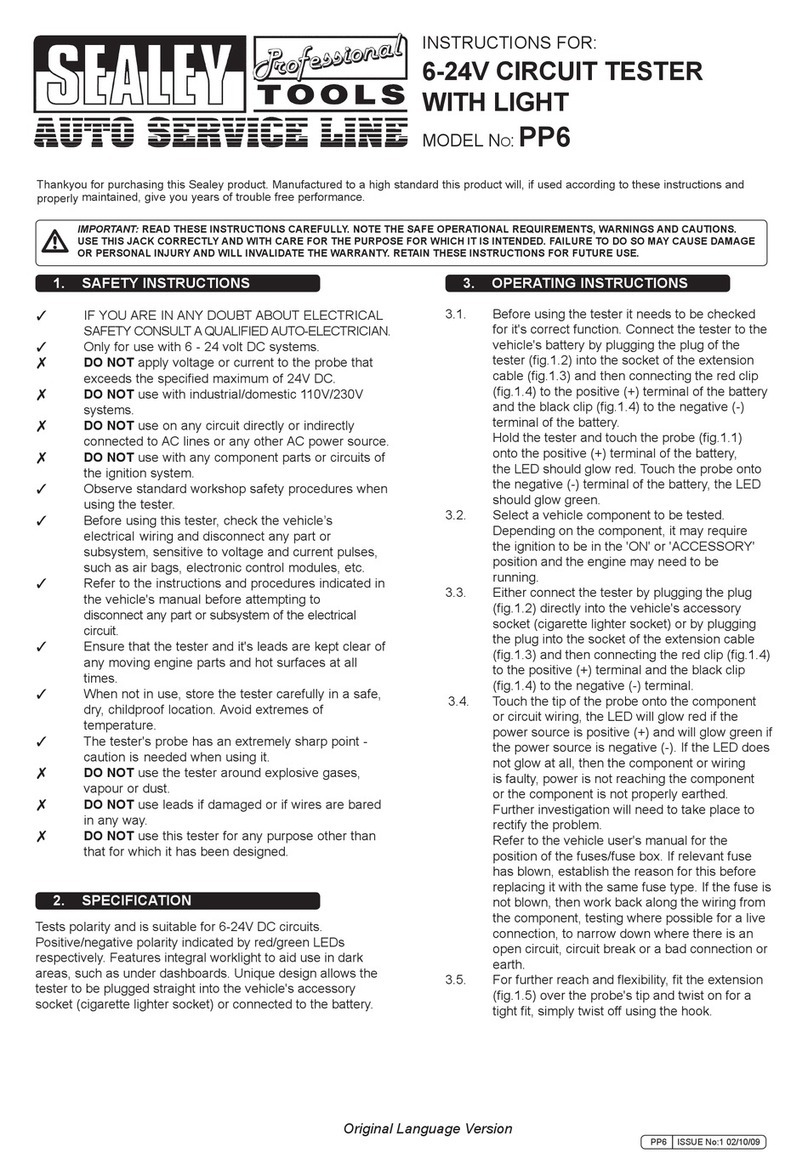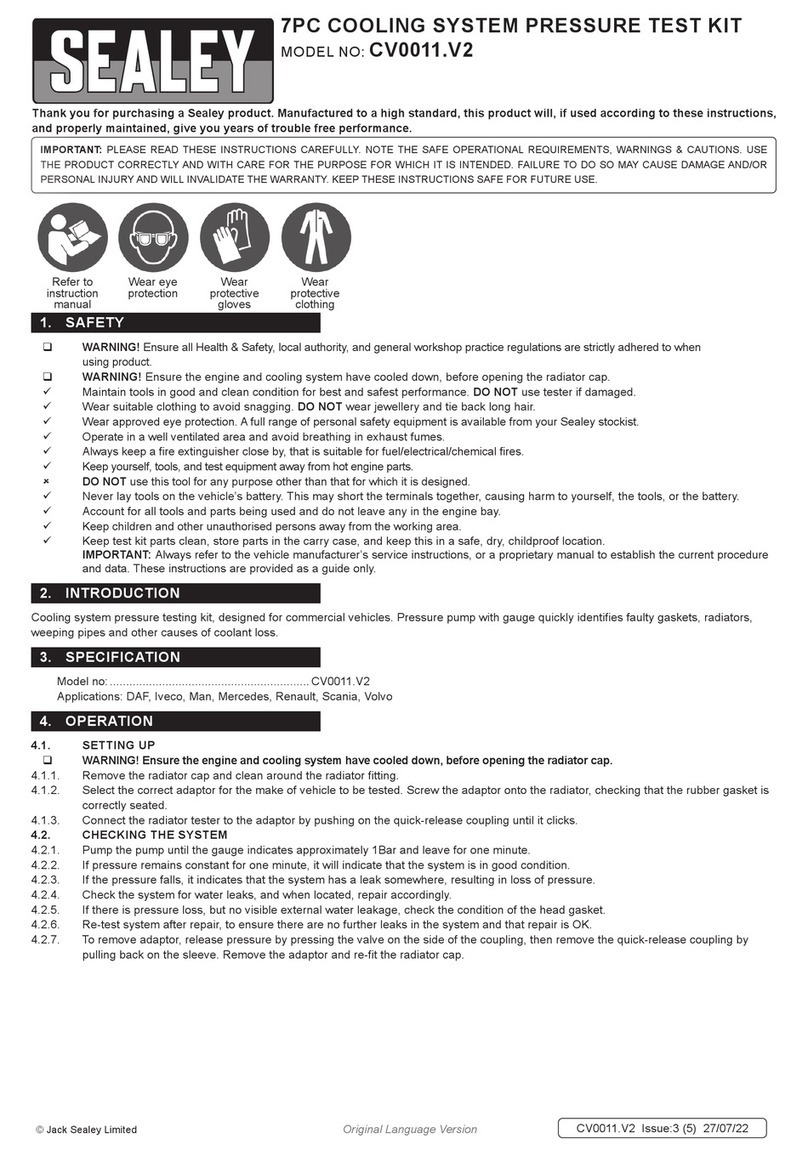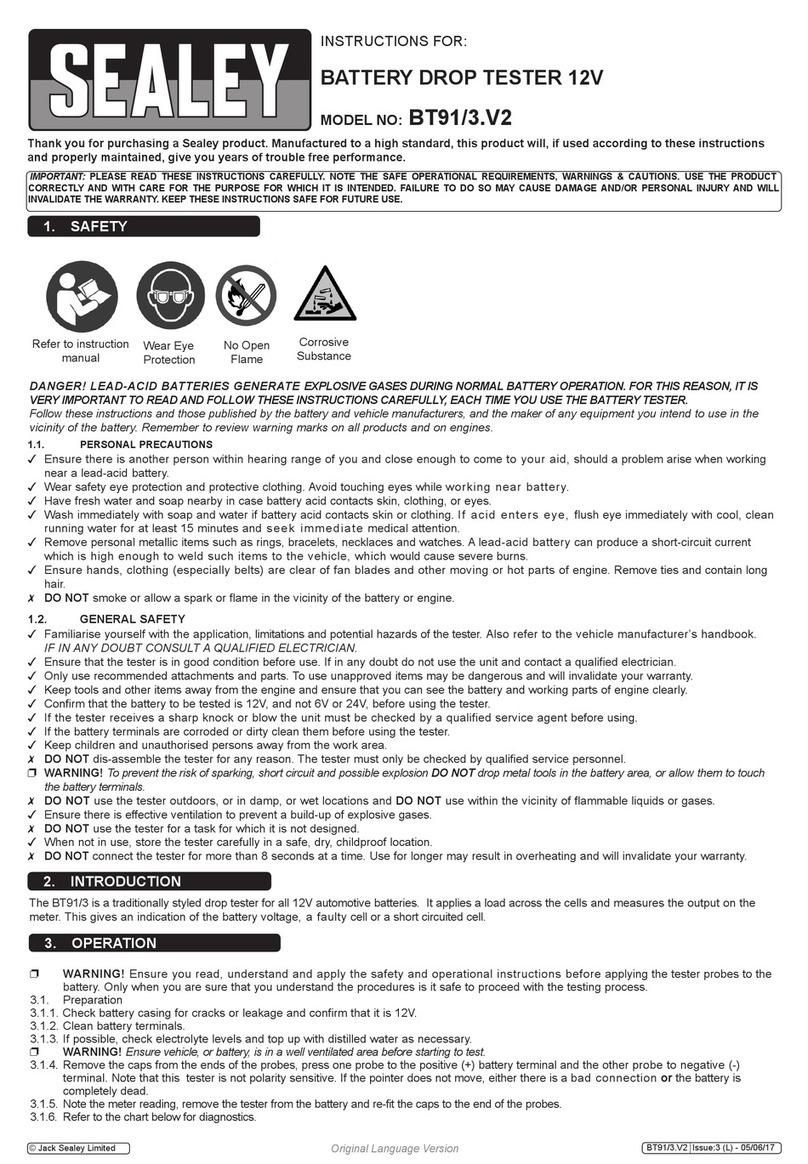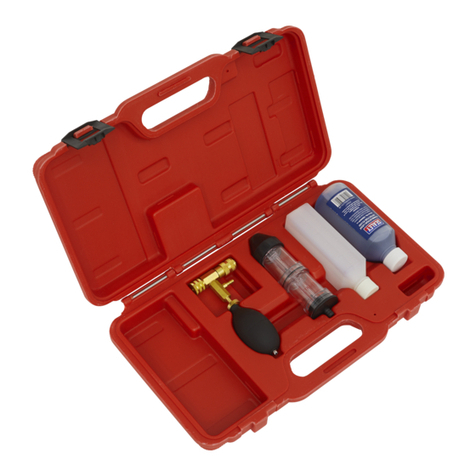
p WARNING! Ensure you read, understand and apply the safety and operational
instructions before connecting the tester clamps to the battery. Only when you
are sure that you understand the procedures is it safe to proceed with the testing process.
3.1. Preparation
3.1.1. Check battery casing for cracks or leakage and confirm that it is 6 or 12 volts.
3.1.2. Clean battery terminals.
3.1.3. If possible, check electrolyte levels and top up with distilled water as necessary.
3.2. Connection
pWARNING! Ensure vehicle, or battery, is in a well ventilated area before starting to test.
3.2.1. Attach positive (red) clamp to positive (+) battery terminal and negative (black) clamp to negative (-)
terminal. Slightly twist clamps on terminals two or three times to ensure a good electrical contact and
a firm grip. Correct connection is indicated by the meter pointer (fig.1) moving to the right, up the scale.
If the pointer moves to the left then the clamps should be reversed. If the pointer does not move at all
there is either a bad connection or the battery is completely dead.
3.2.2. Ensure that the clamp cables are clear of hot or moving engine parts, particularly if a starter or charging
test is to be carried out. Ventilation slots in tester casing should be unobstructed, meter should be easily
visible and load switch accessible.
1.1. PERSONAL PRECAUTIONS
3Ensure there is another person within hearing range of your voice and close enough to come to your aid, should a problem
arise when working near a lead-acid battery.
3Wear safety eye protection and protective clothing. Avoid touching eyes while working near battery.
3Have fresh water and soap nearby in case battery acid contacts skin, clothing, or eyes.
3Wash immediately with soap and water if battery acid contacts skin or clothing. If acid enters eye, flush eye immediately with cool, clean running water for at
least 15 minutes and seek immediate medical attention.
3Remove personal metallic items such as rings, bracelets, necklaces and watches. A lead-acid battery can produce a short-circuit current high enough to weld a
ring or the like to metal, which would cause severe burns.
3Ensure hands and clothing (especially belts) are clear of fan blades and other moving or hot parts of the engine, remove ties and contain long hair.
7DO NOT smoke or allow a spark or flame in the vicinity of battery or engine.
1.2. GENERAL SAFETY INSTRUCTIONS
3Familiarise yourself with the application and limitations of the tester as well as the potential hazards. Also refer to the vehicle manufacturers handbook. IF IN ANY
DOUBT CONSULT AN ELECTRICIAN.
3Ensure the tester is in good order and condition before use. If in any doubt do not use the unit and contact an electrician.
3Only use recommended attachments and parts. To use non-recommended items may be dangerous and will invalidate your warranty.
3Ensure the tester load switch is Off before attaching/detaching the power clamps to/from the battery terminals.
3Keep tools and other items away from the engine and ensure you can see the battery and working parts of the engine clearly.
3Confirm that the battery to be tested is 6 or 12 volt and not 24 volt before attaching clamps to battery terminals.
3If the tester receives a sharp knock or blow the unit must be checked by a qualified service agent before use.
3If the battery terminals are corroded or dirty clean them before attaching the clamps.
3Keep children and unauthorised persons away from the work area.
7DO NOT dis-assemble the tester for any reason. The tester must only be checked by qualified service personnel.
pWARNING! To prevent the risk of sparking, short circuit and possible explosion DO NOT drop metal tools in the battery area, or allow them to touch the battery terminals.
7DO NOT cross connect leads from tester to battery. Ensure positive (+/RED) is to positive and negative (-/BLACK) is to negative. If symbols cannot be
distinguished, remember that the negative terminal is the one directly connected to the vehicle bodywork.
7DO NOT pull the cables or clamps from the battery terminals.
7DO NOT use the tester outdoors, or in damp, or wet locations and DO NOT use within the vicinity of flammable liquids or gases.
3Ensure there is effective ventilation to prevent a build-up of explosive gases and do not cover or obstruct tester ventilation louvres.
7DO NOT use the tester for a task for which it is not designed.
3When not in use, store the tester carefully in a safe, dry, childproof location.
7DO NOT operate the load switch for more than 10 seconds at a time (failure to release the switch after 10 seconds may result in the switch burning out and
invalidating your warranty).
INSTRUCTIONS FOR:
6V & 12V BATTERY TESTER
MODEL: BT91/7C
Thank you for purchasing a Sealey product. Manufactured to a high standard this product will, if used according to these instructions
and properly maintained, give you years of trouble free performance.
1. SAFETY INSTRUCTIONS
IMPORTANT: PLEASE READ THESE INSTRUCTIONS CAREFULLY. NOTE THE SAFE OPERATIONAL REQUIREMENTS, WARNINGS AND CAUTIONS. USE THE PRODUCT
CORRECTLY AND WITH CARE FOR THE PURPOSE FOR WHICH IT IS INTENDED. FAILURE TO DO SO MAY CAUSE DAMAGE AND/OR PERSONAL INJURY AND WILL
INVALIDATE THE WARRANTY. PLEASE KEEP INSTRUCTIONS SAFE FOR FUTURE USE.
DANGER! BE AWARE, LEAD-ACID BATTERIES GENERATE EXPLOSIVE GASES DURING NORMAL BATTERY OPERATION. FOR THIS REASON, IT IS
VERY IMPORTANT TO READ AND FOLLOW THESE INSTRUCTIONS CAREFULLY, EACH TIME YOU USE THE BATTERY TESTER.
Follow these instructions and those published by the battery and vehicle manufacturers, and the maker of any equipment you intend to use in the vicinity
of the battery. Remember to review warning marks on all products and on engines.
The BT91/7C is a battery tester, accurate to ±2%, suitable for 6 and 12 volt lead-acid batteries.
The unit measures open circuit and under load voltages and can be used to check the condition
of the starting and charging systems. The battery load is switched into and out of circuit as
required, thereby eliminating arcing at the battery terminals.
3. OPERATION
2. INTRODUCTION
fig. 1
BT91/7C - 0008 - (1) - 150501
fig. 2
